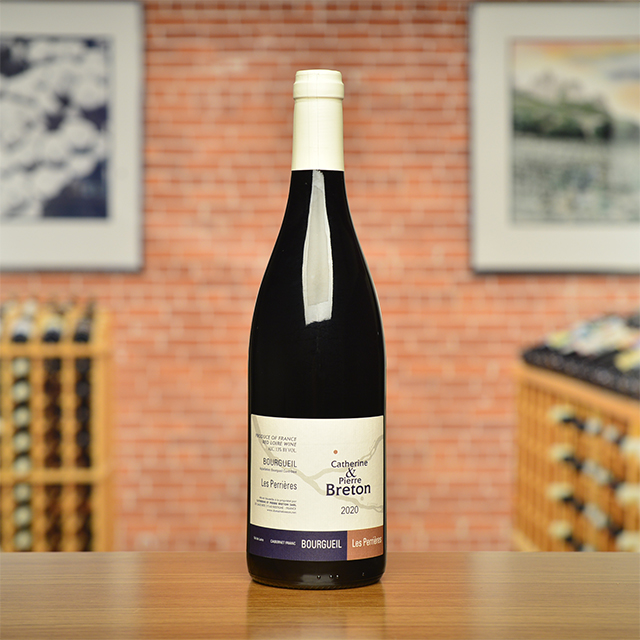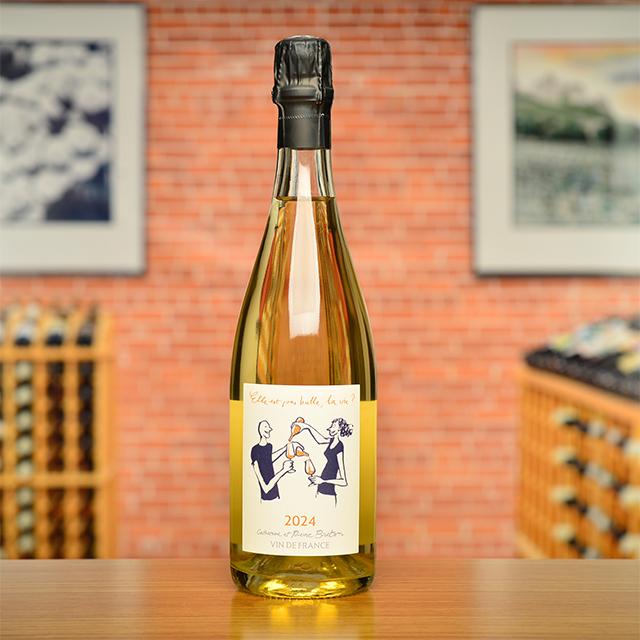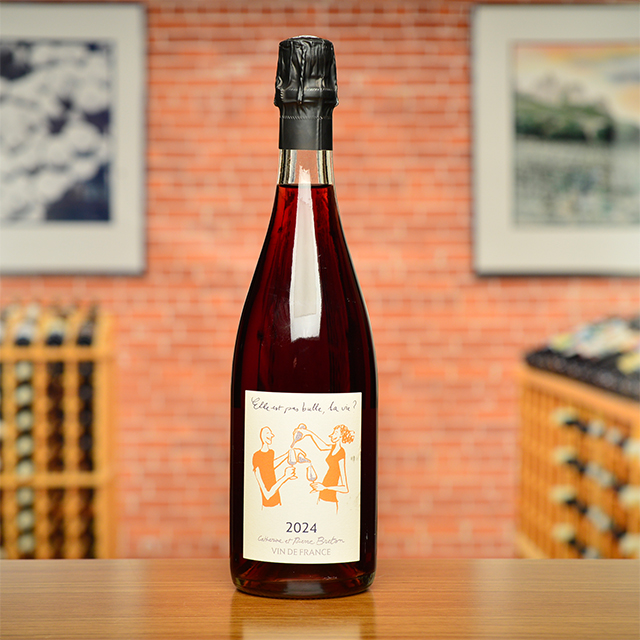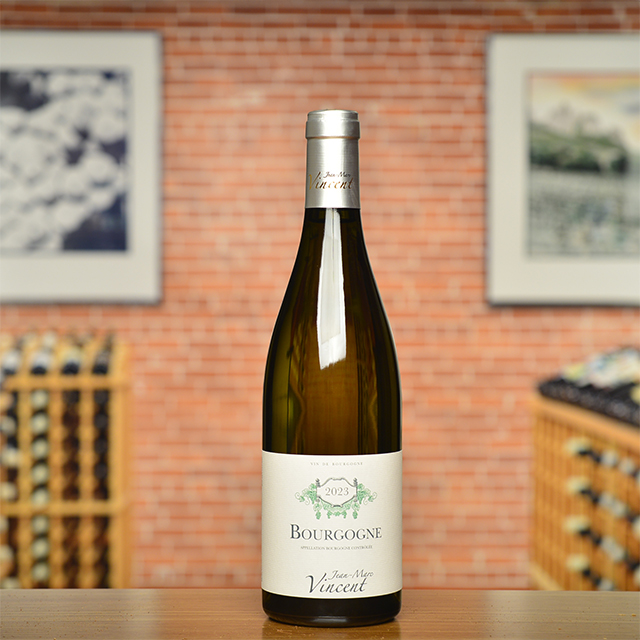Notify me
2019 Bourgueil “Clos Sénéchal”
Catherine & Pierre Breton
Our most light-hearted Cabernet Francs come from the Bretons; juicy quaffers from sun-warmed gravel that make for joyful sipping. By contrast, Clos Sénéchal is studious and sturdy, emerging from the Loire’s famed tuffeau. This renowned limestone terroir lends structure and a touch of youth that will serve well for elegant aging. Enjoy it now for dense and inky fruit—purple plums and dried cherries marked with a touch of smoky tobacco.
—Allyson Noman
| Wine Type: | red |
| Vintage: | 2019 |
| Bottle Size: | 750mL |
| Blend: | Cabernet Franc |
| Appellation: | Bourgueil |
| Country: | France |
| Region: | Loire |
| Producer: | Catherine & Pierre Breton |
| Winemaker: | Catherine & Pierre Breton |
| Vineyard: | 40 years, 1.3 ha |
| Soil: | Gravel, Clay, Limestone |
| Aging: | The wine is macerated in open wood vats and fermented and aged in wooden foudres. It is bottled without fining or filtration after 18 months of aging. |
| Farming: | Biodynamic (certified) |
| Alcohol: | 13% |
More from this Producer or Region

2020 Bourgueil “Les Perrières”
France | Loire
The family’s grandest wine, a brooding elixir of satiny fruit, cedar, and graphite.

2023 Chinon “Beaux Monts”
France | Loire
Sourced from the village of Beaumont, it is utterly delicious, with a perfect balance of fruit and earth.

2024 Bourgueil “Trinch!”
France | Loire
Peppery and bright, earthy and juicy all at once.

Vouvray Brut “La Dilettante”
France | Loire
Dry Champagne-method sparkler that delivers tremendous value.

2024 Vin de France Brut Nature “Elle est pas bulle la vie?”
France | Loire
Delicious and honest naturally sparkling Chenin, bottled with no dosage and no sulfur.

2024 Vin de France Rosé Brut “Elle est pas bulle la vie?”
France | Loire
It’s refreshingly bright on the palate, flush with delicate notes of strawberry rhubarb, and dangerously quaffable.

2024 Vouvray “La Dilettante”
France | Loire
Delicate, precise, and succulent at the same time, this beautiful blanc will pair well with fresh seafood and light summer salads and pastas.

2023 Bourgueil “Franc de Pied”
France | Loire
Serve it with a slight chill, and you’ll have a satisfyingly fresh red with medium fruit and a light dusting of herbs and tannin.

2021 Bourgueil “La Dilettante”
France | Loire
A delicate, aromatic red in the “drink now!” vein.

2021 Bourgueil “Clos Sénéchal”
France | Loire
This divine red allies the power and finesse one would expect from this great terroir.
About The Producer
Catherine & Pierre Breton
About The Region
Loire

The defining feature of the Loire Valley, not surprisingly, is the Loire River. As the longest river in France, spanning more than 600 miles, this river connects seemingly disparate wine regions. Why else would Sancerre, with its Kimmeridgian limestone terroir be connected to Muscadet, an appellation that is 250 miles away?
Secondary in relevance to the historical, climatic, environmental, and cultural importance of the river are the wines and châteaux of the Jardin de la France. The kings and nobility of France built many hundreds of châteaux in the Loire but wine preceded the arrival of the noblesse and has since out-lived them as well.
Diversity abounds in the Loire. The aforementioned Kimmeridgian limestone of Sancerre is also found in Chablis. Chinon, Bourgueil, and Saumur boast the presence of tuffeau, a type of limestone unique to the Loire that has a yellowish tinge and a chalky texture. Savennières has schist, while Muscadet has volcanic, granite, and serpentinite based soils. In addition to geologic diversity, many, grape varieties are grown there too: Cabernet Franc, Chenin Blanc, Sauvignon Blanc, and Melon de Bourgogne are most prevalent, but (to name a few) Pinot Gris, Grolleau, Pinot Noir, Pineau d’Aunis, and Folle Blanche are also planted. These myriad of viticultural influences leads to the high quality production of every type of wine: red, white, rosé, sparkling, and dessert.
Like the Rhône and Provence, some of Kermit’s first imports came from the Loire, most notably the wines of Charles Joguet and Château d’Epiré—two producers who are featured in Kermit’s book Adventures on the Wine Route and with whom we still work today.
More from Loire or France
2024 Sancerre
Domaine Roger Neveu France | Loire
2020 Chinon “Les Varennes du Grand Clos”
Charles Joguet France | Loire
2020 Vin de France Blanche
Domaine Michel Brégeon France | Loire
2024 Val de Loire Sauvignon Blanc “Unique”
Domaine du Salvard France | Loire
Touraine “Fines Bulles”
Domaine de la Chanteleuserie France | Loire
2020 Vin de France Rouge Cabernet Franc “Huguette”
Grange Saint Sauveur France | Loire
2024 Cheverny
Domaine du Salvard France | Loire
2024 Reuilly Pinot Gris Rosé
Domaine de Reuilly France | Loire
2024 Sancerre
Daniel Chotard France | Loire
2024 Muscadet “Le Clos de la Butte”
Eric Chevalier France | Loire
2024 Vouvray
Champalou France | Loire
Vouvray Brut “La Dilettante”
Catherine & Pierre Breton France | Loire
2024 Sancerre
Domaine Roger Neveu France | Loire
2020 Chinon “Les Varennes du Grand Clos”
Charles Joguet France | Loire
2020 Vin de France Blanche
Domaine Michel Brégeon France | Loire
2024 Val de Loire Sauvignon Blanc “Unique”
Domaine du Salvard France | Loire
Touraine “Fines Bulles”
Domaine de la Chanteleuserie France | Loire
2020 Vin de France Rouge Cabernet Franc “Huguette”
Grange Saint Sauveur France | Loire
2024 Cheverny
Domaine du Salvard France | Loire
2024 Reuilly Pinot Gris Rosé
Domaine de Reuilly France | Loire
2024 Sancerre
Daniel Chotard France | Loire
2024 Muscadet “Le Clos de la Butte”
Eric Chevalier France | Loire
2024 Vouvray
Champalou France | Loire
Vouvray Brut “La Dilettante”
Catherine & Pierre Breton France | Loire
Kermit once said...

Kermit once said...
When buying red Burgundy, I think we should remember:
1. Big wines do not age better than light wine.
2. A so-called great vintage at the outset does not guarantee a great vintage for the duration.
3. A so-called off vintage at the outset does not mean the wines do not have a brilliant future ahead of them.
4. Red Burgundy should not taste like Guigal Côte-Rôtie, even if most wine writers wish it would.
5. Don’t follow leaders; watch yer parking meters.
Inspiring Thirst, page 174


















